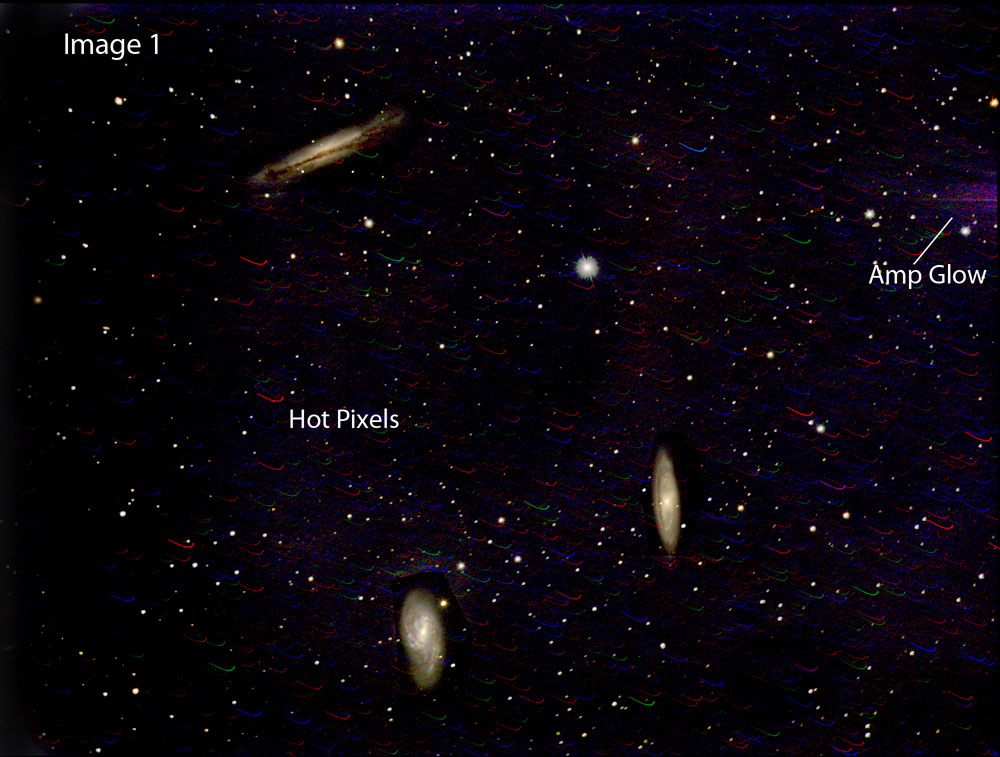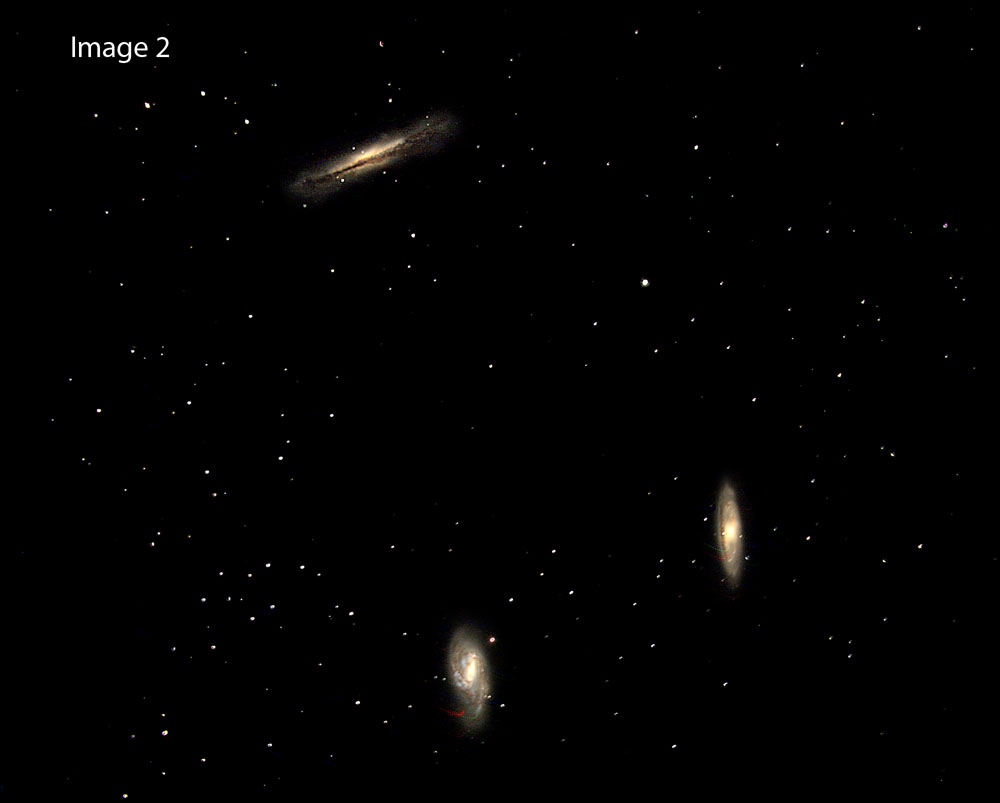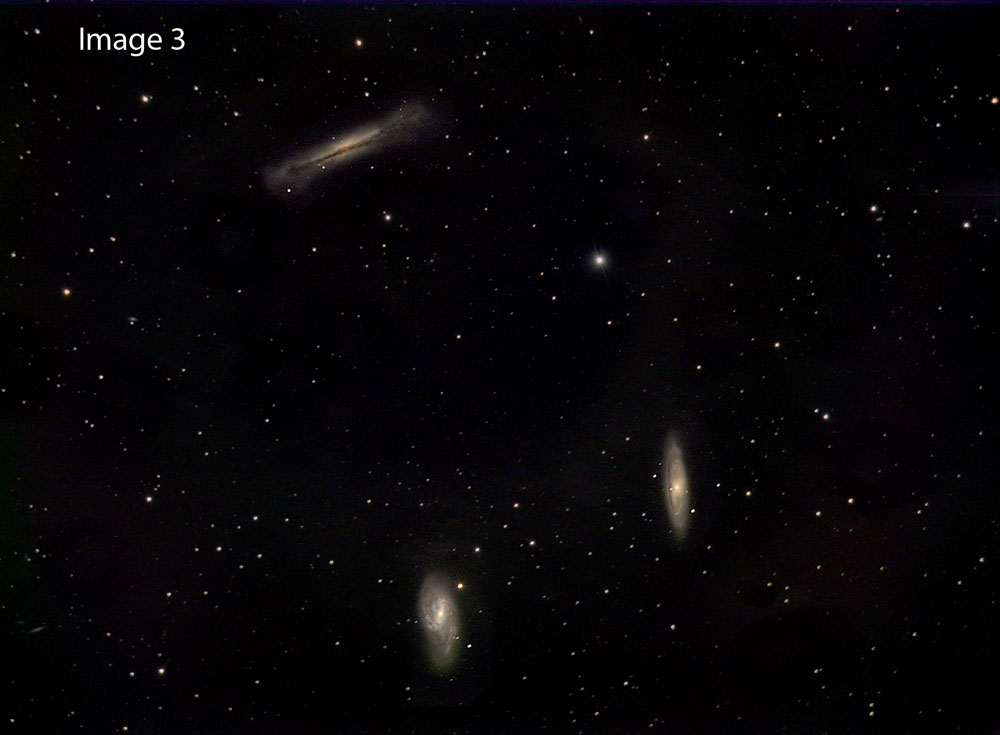SEPTEMBER 2023
Deep Sky Stacker Sigma-Kappa stacking mode
If one takes a reasonable number of frames, DSS can eliminate satellite or plane trails by employing the Sigma-Kappa stackingmode. Having stacked the frames, the mean value of each pixel is found. DSS then works through each frame and for each pixel that has a value greater than (say) 2 standard deviations away from the mean it replaces that value with the mean value. As the pixels along a satellite trail will be brighter than the mean values, the trail will be removed.
Being able to use this technique is one very good reason that, with CMOS cameras now having a very low read noise and fast readout one should take many short exposures (say of 60 seconds duration) rather than a few long ones. The taking of short exposures may well not require the use of autoguiding so simplifying the imaging setup.
Doing some test of a set of 300, 30 second, exposures of the Leo Triplet, I discovered that this stacking mode seemed able to remove hot pixels. As I use ‘dithering’ to allow the captured frames to fall on varying close regions of the sensor I can see how this is possible. However, it also appeared to remove the amp glow that my 294 colour camera exhibits which I find hard to believe.
So, if one is using a DSLR or mirrorless camera where the taking of dark frames is difficult as the sensor temperature will increase during the imaging period it could be well worth using this stacking mode.

Image 1 shows the stacked and stretched (in Siril) result using the ‘Average’ stacking mode. One can see the curved trails produced by the hotspots. This is due to the fact that the unguided mount was very slightly misaligned on the NCP. It is this crude form of dithering that has enabled DSS to remove them. Some amp glow is also visible.

Image 2 shows the stacked and stretched result using the ‘Average’ stacking mode when a set of dark frames were included. As one would hope, both hot pixels and amp glow are removed.

Image 3 shows the stacked and stretched result using the ‘Sigma-Kappa’ stacking mode without dark frames. Somewhat to my surprise, this has given as good a result as when dark frames were employed.